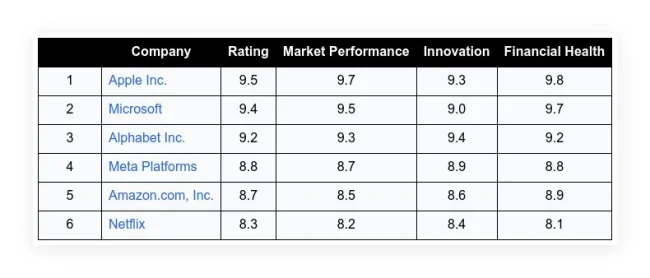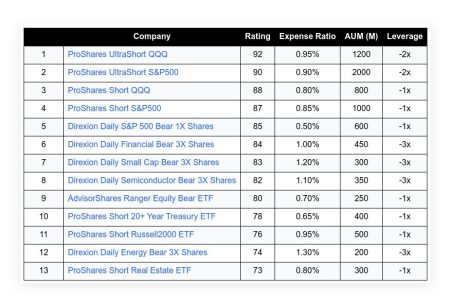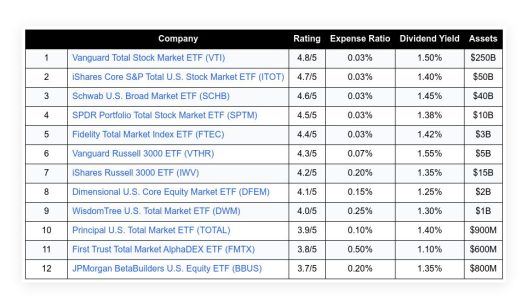When you talk about managing your finances, how frequently do you review your expenses? Don’t you worry about grocery bills pinching your wallet or travel expenses rising like never before?
Well, whether you curse inflation, recessions, market downturns, or international events, future-proofing your money is crucial. With inflation rising at an ominous rate over the last 12 months, there’s a thin chance of it dipping below 6% anytime soon.
So, what’s your counter-strategy to prepare your finances for the future? Investments can be intriguing, and financial planning turns out to be a meticulous affair!
Economists are speculating that the current inflation spike is here to stay. How do you plan to allocate your assets and save your money for your future?
In this article, we have come up with a bag of advice to help future-proof your money. Besides, we have recommended some asset classes that would grow your funds to beat inflation.
Table of Contents
ToggleHow to turn saving into a habit?
We all love our salary day. We feel gratified with our lives when our hard-earned income is credited to our bank accounts. However, it’s easier to spend money than earn it. Earning financial freedom seems to be a myth, right?
A study reveals that 15% of Americans didn’t have any kind of retirement savings whatsoever. 5% of the citizens saved less than $25,000. Another 22% had just $5,000 or even less as their retirement savings.
That’s how grim the reality of finances is amidst challenges like inflation and recession. To draw your line of defense against unplanned expenses and combat inflation, try cultivating the habit of saving.
Before we recommend how to diversify your portfolio, here are a few tips that should help you save more!
1. Budget, review, and save
Do you know why most people fail to save money? The temptation to spend and celebrate the joy of earning can be dangerous! In times of plenty, overspending on unnecessary things and extravagant lifestyles can get you carried away.
Saving money starts with handling it wisely. Have you reviewed your major living cost and identified where your monthly income is going?
Well, we aren’t advising you to do away with all your indulgences. However, it’s always good to cultivate saving habits by curtailing unnecessary bills and expenses!
How about eating out twice a week rather than thrice? How about switching to a different insurer to save premiums? Approach your streaming services, utility bills, and gym memberships in the same way.
There are plenty of avenues where you can save without impacting your lifestyle. Most importantly, refrain from making impulse purchases.
By being realistic with your budgeting, you can keep your household expenses within control. Now that you have been saving a bit, why not put it aside in a SIP or recurring deposit?
2. Be debt-free
Do you know what the worst thing about having debts is? You shell out interest that you could be saving. Besides, having a debt-paying mentality dampens your spirit to save!
Having multiple loans at high-interest rates can be a setback for your financial goals. The interest would be eating into your household income and preventing you from saving. Again, long-term debts such as mortgages can unsettle your retirement savings. It’s okay to have a small debt so long as it doesn’t prevent you from planning your future savings. Planning your future savings is a critical way to future-proof your money.
- Consider consolidating your loans at a lower interest rate to curtail unnecessary cash outflow each month.
- Factor in your loan tenure, interest rate, and credit score as you equate your liabilities and savings plans.
- You may also consider balance transfer options to curtail your interest rate.
The sooner you are debt-free, the earlier you can start consolidating your future assets.
3. Automate your savings
You prefer automating our credit card dues or loan repayments, right? This way, you ensure the amount gets transferred to your lender every month.
Why not approach your saving mission in the same way? Automatic transfers to your savings accounts, mutual funds, or recurring deposits can make saving a healthy habit. The amount would get into the respective accounts straight out of your paycheck.
As you prioritize your saving goals, track the amount and proportion of money you channel into each account. Automating your savings will force you to put aside money for your future and future-proof your money.
Does your recruiter provide a plan for retirement savings? If they do, go for it. Without a 401(k) or 403(b) plan, why not open a Roth IRA? It makes sense to invest in these accounts as you channel your funds into index funds having low expense ratios.
4. Save funds for your rainy days
Well, do you have an emergency fund in place? It’s easy to use the term ‘rainy day fund’ interchangeably, but you shouldn’t. While planning your finances, make sure to allocate funds for both these purposes, given that they serve slightly different objectives.
Suppose you are out of work due to illness or recession for a few months. Your emergency fund would help you sustain yourself and maintain the same lifestyle standard.
However, rainy-day funds aim to manage one-time expenses. For instance, there’s hail damage to your home, or your insurance fell short of compensating for medical bills following an accident. Sooner or later, every household needs to shell out these unexpected costs. From car breakdowns to malfunctioning home appliances, rainy day funds help manage these expenses.
With your rainy-day funds in place, you won’t be digging into your future savings. Neither would you need to stop your SIPs or interrupt them for a month or so. Digging into savings or stopping your SIPs could prevent you from future-proofing your money and finances.
5. Reduce your dependency rate
What proportion of your paychecks are you dependent on? This percentage determines your dependency rate. Try to slash your dependency rate to weather yourself through challenging financial times. So, it’s better to have a 60% dependency rate than a 90% one.
To reduce your dependency rate, be patient and stick to tight budgeting practices. Working your way out of tough financial crunches will prepare you for saving money in the future.
Try to differentiate between your needs and wants. Also, educate your kids to maintain a healthy lifestyle without going extravagant. Ultimately, when each member of a family starts saving, the amount translates to future assets.
Creating a long-term wealth portfolio: How to plan your investments?
Let’s take a look at how you can create a well-balanced investment portfolio that can serve as a hedge against inflation and other economic crisis.
1. Allocate your investments wisely
At a time when inflation looks menacingly threatening, it’s logical to allocate your investments wisely. Financial experts recommend allocating 40% of your investments to fixed-income assets. Channel the remaining 60% to moderate equities to balance your financial portfolio.
Adopting an income-oriented stance, why not shift some of your investment to dividend-yielding stocks? Historical records reveal that stocks have beaten bonds while keeping up with inflation.
2. Purchase irreplaceable items
With prices of goods and services soaring, it pays to invest in irreplaceable items. We are talking about real estate and land. You may even consider collector’s edition baseball cards or similar unique items. In times of inflation, these items perform exceptionally well. Just because they can’t be replicated, they can serve as a hedge against inflation.
3. Go for TIPS
Investing in Treasury Inflation-Protected Securities (TIPS) is advisable when you look forward to developing a well-balanced asset portfolio and future-proof your money.
TIPS refers to government bonds where the growth pattern replicates the increment and dip of inflation. So, you can expect a better interest rate when inflation rises! You won’t repent low returns even when other asset classes perform adversely amidst high inflation in the coming years.
Having TIPS in your finance portfolio negates the adverse impact of inflation on your bond or fixed-income portfolio. TIPS happens to be one of the safest channels of investment since the federal government of the US backs it. Therefore, you can diversify your investment while strategizing channels for your future fund inflows.
Besides, investors can expect interest twice a year from TIPS bonds. At maturity, you would receive more than the adjusted principal.
4. Real estate investment trusts (REITs)
An increasingly higher number of US citizens are counting on REITs to grow their assets. REIT companies own and operate real estate that generates income. When inflation rises, property prices would correspondingly witness a spike. So would rental income, and the chain effect tends to benefit REIT investors. In major REITs in the US, there’s a pool of properties, and investors get dividends from their profits.
However, it pays to know the drawbacks of REITs before investing in them. With the rise in interest rates, treasury securities turn out to be more attractive. This can lower the share prices of REITs as the funds get drawn away from them. Nevertheless, considering the dividends, REITs are an impressive investment avenue.
6. Short and mid-term fixed accounts
In an attempt to weather an upcoming recession, it’s imperative to secure your retirement accounts amidst inflation. So, review your mid- and short-term fixed accounts. These include your fixed annuities with tenures between two to five years.
Considering guaranteed rates, you can’t expect much from CDs and money market accounts. However, a mid or short-term annuity can offer fixed returns of up to 3%.
7. Diversity your equity portfolio with stocks
It takes adequate financial knowledge to craft a well-balanced equity portfolio in the stock market. With a meticulous approach and foresight, stocks can be a hedge against inflation in the long term. However, stocks won’t save you from inflation in the short term. Therefore, put aside adequate funds for short to mid-term investments.
For beginners, we would recommend index funds that follow the market pattern. Financial experts suggest that these funds perform well in the long term.
Simply open a Demat account on a trading platform. A Demat account will have the details of the shares and securities in your name, and your trading account allows you online trading facilities. This will make it easier to participate in the stock market if you wish. Be sure to get along with one of the top brokers, as they offer user-friendly features on their apps. Use their free resources to refine your knowledge.
8. Invest in precious metals
One of the effective tactics to hedge against inflation while securing your assets is to invest in precious metals. Evidence, as well as historical data, reveals this tactical link between metals and inflation.
Gold and silver cannot be printed, unlike paper currencies. This implies that these metals would always present a shortage to investors in terms of availability. Moreover, even when the currency grows weak, precious metals tend to hold their value.
In the past, investors used to vouch for physical gold and silver in the form of jewelry, bullion, and coins. Currently, you have other investment channels for precious metals, including Silver ETFs and Gold ETFs.
Apart from gold’s symbolic value, its modern uses and scarcity make it worthy. Besides, it finds a wide range of industrial applications. The same applies to silver, a crucial element in electronics. No wonder why forward-thinking investors switch to gold and silver to prevent their wealth from melting away amidst high inflation. This way, you can draw your line of defense against currency devaluation.
9. Invest in commodities
With inflation showing its ugly face, it’s logical to invest in commodities. As per research, commodities continue to be one of the asset classes that remain correlated positively with inflation. Besides, commodities are not correlated to the stock market. So, why not think of asset diversification by including commodities in your portfolio?
Commodities refer to agricultural products or raw materials that can be traded. Common commodities include natural gas, pulses, spices, grains, oil, and metals. Given that commodities are essential for maintaining the daily livelihood of consumers, they hold intrinsic value for investors.
During inflation, the prices of essential commodities like pulses, oil, and grains spike. Naturally, strategic commodity investments can future-proof your money and investments.
Investors can purchase commodities indirectly through stocks or futures contracts. If you are unwilling to expose yourself to the futures trading risks, go for exchange-traded funds (ETFs) or commodity mutual funds.
A word of caution for investors, commodities can be more volatile than you think. Since the prices of commodities fluctuate with demand and supply, demographic conflicts can impact the pricing severely.
Endnote
Now that we have discussed effective strategies to counter inflation and other economic crisis, you are well-poised to craft your investment portfolio. Consult a financial expert if you aren’t confident in dividing your assets across all these investment channels (this is usually advised).
We would also advise you to categorize your financial goals into three segments: short-term, mid-term, and long-term goals. Go for long-term wealth creation only after addressing your immediate, short-term, and mid-term financial goals.
With healthy saving habits and responsible money handling, investors can brace up against inflation with confidence. The secret to success in financial management lies in identifying your goals and strategizing investments wisely.















